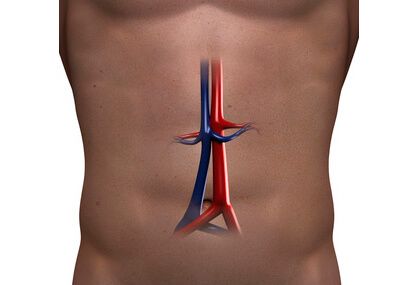Compared to surgery, endovascular repair of ruptured abdominal aorta aneurysms has better clinical results, survival and quality of life for patients (in addition to being cost-effective), according to mid-term outcomes of the IMPROVE study, recently published in the British Medical Journal.
Even though the initial outcomes had not shown differences between both strategies in terms of mortality, the three-year outcomes did show significant benefits in the hardest of end points. For those treated with endoprosthesis, mortality rate was 42% vs. 54% for those receiving open surgery (OR 0.62; CI 95% 0.43 to 0.88).
Read also: “TAVR in Pure Aortic Regurgitation: New Devices, New Outcomes”.
Many clinicians had felt disappointed by the initial results, seeing that mortality was high and similar with both strategies, and showing that the real problem lied on hypovolemic shock, which many of these patients were admitted with. As time went by, the longer stay at intense care and greater need of hemodialysis played against surgery.
The IMPROVE study included 613 patients with ruptured abdominal aorta or iliac aneurysms treated in one center in Canada and 29 centers in the UK between 2009 and 2013. All patients were randomized to open surgery (n=297) or immediate CT to define anatomical feasibility for endoprosthesis (n=316).
At 3-year mean follow-up there was a trend for lower mortality in the endovascular group (HR 0.92; CI 95% 0.75-1.13) that was later confirmed, after Kaplan-Meier curve adjusting. Between 3 months and 3 years, survival with endoprosthesis was clearly superior to surgery (HR 0.57; CI 95% 0.36-0.90).
Read also: “Cardiac Damage: Should we start to assess it?”
The high mortality in the surgery group, was not directly associated to the ruptured aneurysm or its repair.
The reintervention rate was similar with both strategies, and the risk of amputation was the complication most feared by patients and their families.
Two patients presented a second rupture after having originally received an endoprosthesis. In both cases, the event was associated to a type 1 leak. The second rupture was not exclusive to the endoprosthesis group, since there was also a patient in the surgery branch that presented this event.
Read also: “Closure of Patent Foramen Ovale for the Treatment of Migraine”.
Mean hospital stay for the endoprosthesis group was 14.4 days vs. 20.5 for the surgery group, which also contributed to making the endovascular strategy more cost-effective.
Original title: Comparative clinical effectiveness and cost effectiveness of endovascular strategy v open repair for ruptured abdominal aortic aneurysm: three year results of the IMPROVE randomised trial.
Reference: Powell JT et al. BMJ. 2017; Epub ahead of print.
Subscribe to our weekly newsletter
Get the latest scientific articles on interventional cardiology
We are interested in your opinion. Please, leave your comments, thoughts, questions, etc., below. They will be most welcome.





